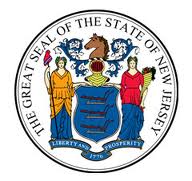

Aerial view of the intersection of Passaic Street and River Drive.
City of Garfield Chamber of Commerce Publication
Courtesy of Pete Brunda, Phyllis Greco , Ross 'Sal' Greco & Rudy Monteleone
Courtesy of Mark S. Auerbach,Mary Lou Holeves & Marie Shaw
by, Joy E. Kovalycsik
Courtesy of Evelyn Salerno
Garfield, Bergen County, New Jersey
With Information Provided by, Evelyn Salerno
History of Garfield
City of Garfield Chamber of Commerce Publication
THE BEGINNINGS:
Circa 1000 BC to 1650 AD, the Hackensack Clan of the Lenni Lenape or Delaware tribe of the Algonquin Nation of Indians lived along the Passaic river area that is now called Garfield. The land was purchased from the Lenni Leanpe in 1679. In March of 1716 the Township of Saddle River was created and Garfield, which was part of the Township, became famous for the wonderful produce that was raised as a result of the flooding of the river and the rich soil it deposited. Orchards produced some of the best fruit in the area and melons, peaches, apples as well as other produce were shipped to Newark and New York from Peck Hook Landing (Midland Avenue). The area was also known as Cadmus Mellon Patch.
The founder of Garfield said, "tell everyone...don’t speak of East Passaic anymore, call it "Garfield" after the man who will lead this great country to prosperity." Unfortunately, seven months later President Garfield was assassinated but his name would live on in this great city. Gilbert Bogart built over 300 houses in Garfield at this time, as housing was needed for the expanding population. In 1881, the first tracks of the Bergen County Railroad, later to become known as the Erie Lackawanna, Conrail and New Jersey Transit Railroad were installed. It was at this time that the first school was built on River Road near Belmont Avenue and in 1882 Garfield received her first post office. By 1882 the population had expanded and there was a need for another school. It was a two room building on Commerce Street between Palisade and Cambridge Avenues. It took one year to build and Ellsworth Shafto became its first un-official Superintendent of the "school system" which included two schools. By 1921 five schools were added and these were called the "schools of the world" having students from Russia* Hungary, Slovakia, Poland and Italy among others.
BUILDING A CITY:
In 1850 August Hasbrouck had a house built at 23 Orchard Street. It still sits there today and is called the Octagon House. Some 29 years later it was sold including 273 Acres and the new "estate" was named "Belmont." As steam power grew in importance and the Industrial Revolution was in its infancy the society and landscape were changing. The Dundee Dam became the needed waterpower for Garfield to become home to the textile industry. The woolen mills such as Forstmann Woolen Co., Garfield Worsted Mills and Samuel Hird Co., built sprawling factories that were assured an ample water supply as well as a constant influx of immigrant workers from Eastern and Southern Europe. From a few farms and houses the need to house these immigrant families to supply the labor for these factories became a growing concern. This is how Garfield developed as a "family town." Developers built houses for families who would live here for generation after generation. Garfield has very few apartment complexes and most of the housing was single or two family dwellings.
On July 17, 1893 a group of citizens gathered at Hollingshead Hall on Washington Place and formed the first Fire Department. It is still called "Old Reliable" today. Fire Company No. 1 used the bell at the First Presbyterian Church as the companies’ fire alarm. In 1905 Fire Company No. 1 sold its building t the borough which became the town’s municipal building. On December 9, 1900, Fire Company No. 2 was born, Fire Company No. 3 on December 16, 1903, Fire Company No. 4 on April 24, 1906, and Fire Company No. 5 on march 26, 1906. The Police Department was formed in 1898 using Marshall’s appointed by the Mayor. From 1898 to date the Garfield Police Department has had only six Chiefs’ of Police.
One could always find work in Garfield and it was a great place to start a business and raise a family. From a farming community, East Passaic became the City of Garfield. The places that supported the families that lived within this city were started as the population expanded, Samuel Hird, 1898, Forstmann Woolen Mills, 1904, Garfield Worsted Mills, 1904 and New Jersey Spinning Company, 1905. The local churches due to the numerous faiths and heritages of those who came to Garfield to seek a new and better way of life numbered 15 during this time, showing the ethnic background of her residents, some of the churches (all still in existence) are First Presbyterian, Holy Trinity, Our Lady of Mt. Virgin, Three Saints Russian Orthodox, Jewish Center, St. Stanislaus and Our Lady of Sorrows. Today, Garfield is still a "family community" where people set down roots and continue to work and live among families and friends.
*Editors Note: Those of Ruthenian and Ukrainian heritages were classified by the school system of that era as "Russian."
Historical Images
Wrigley Field
Hird's Field
YMCA tennis Court
Corner of Elm & Outwater Lane
Market Street & Jewel Street
Semel & Palisade Avenue
Garfield School No. 4
Holy Name Cadets at Garfield Stadium
Happy Rollers, Inc.
Wrigley Field
Thank you to Ross 'Sal' Greco for sharing his photos and memories of his childhood playing ball at "Wrigley Field".
View from home plate to were the fences are.
In 1941 Bob Grembowitz, his brother Frank, along with some friends started and completed a ball field. Bob was an avid Cub's fan. This devotion to his favorite team provided the name for the new ball park, "Wrigely Field". The field was on a wooded lot owned by Julius Forstmann. Mr. Forstmann owned and operated weaving plants in both Clifton and Garfield. The Garfield plant opened in 1909 on Lanza Avenue. "Wrigely" was in the back of Mike Godlash's home at 231 Lanza Avenue. This field went on to serve the youth of Garfield for nine years.
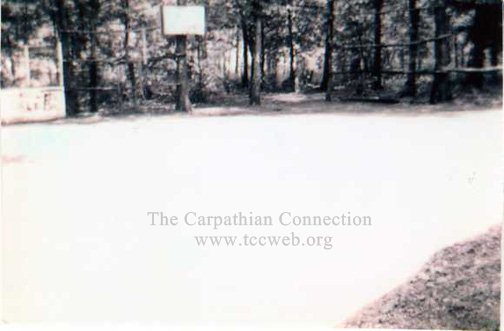
John Walkus, John Ballut
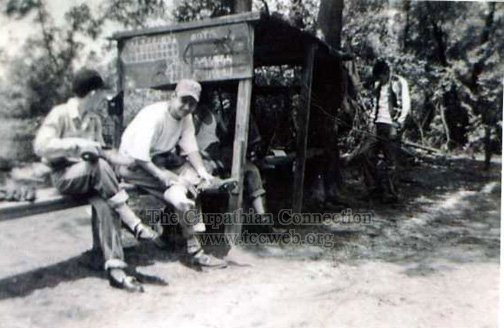
John Walkus
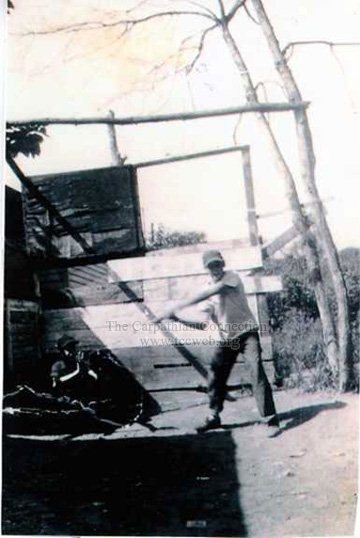
Left - Right Edward Janiga, Victor Basksa, Stanley Doviak
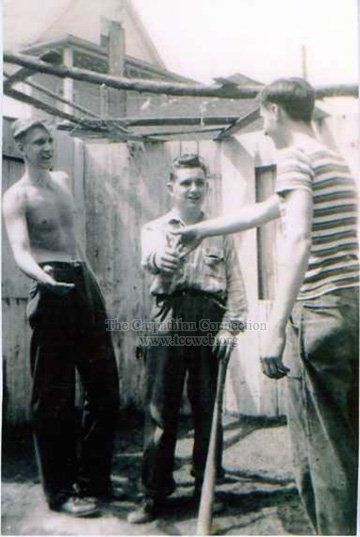
Front Frank Serfin
2nd Row Left to Right Joe Wolosz, Ken Godlash, John Serfin
Back Row John Ballut, Frank Grembowitz
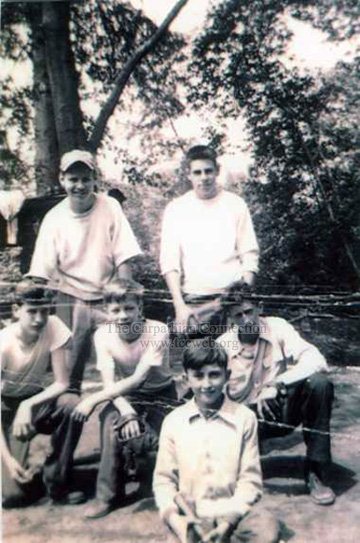
Left - Right John Ballut, Joe Wolosz, John Serfin, Frank Greenbowitz and his cousin Ken Godlash
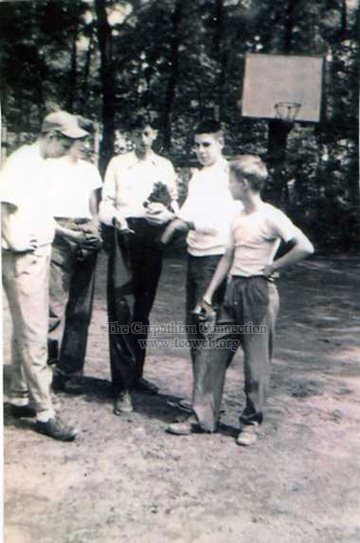
Hird's Field
Empire Box Company in right field
Courtesy of Pete Brunda
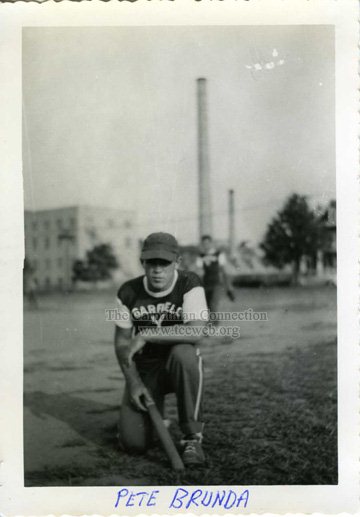
YMCA tennis Court
The old YMCA tennis court with Hird's Field in the background
Courtesy of Peter Brunda
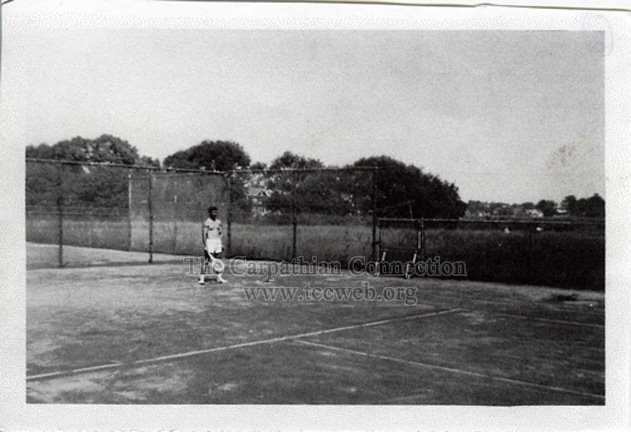
The old YMCA tennis court with Hird's Field in the background
Courtesy of Peter Brunda
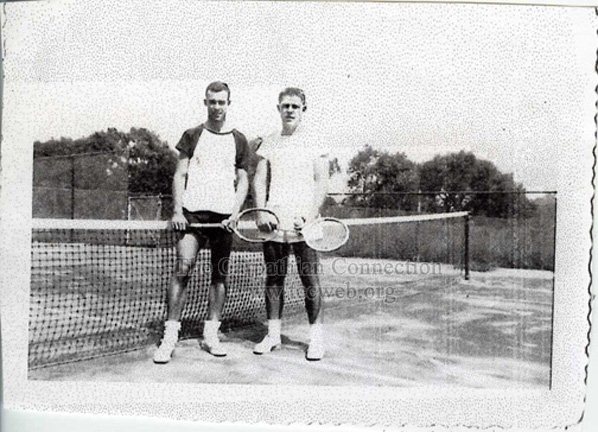
The old YMCA tennis court with Hird's Field in the background
Courtesy of Peter Brunda
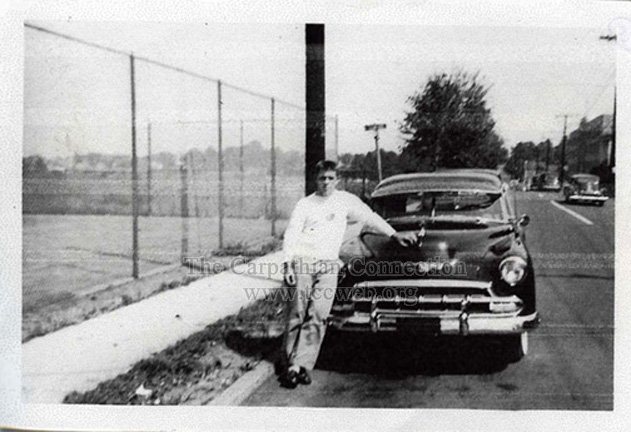
Corner of Elm & Outwater Lane
Across from Stephan Muller's Cafe
Courtesy of Peter Brunda
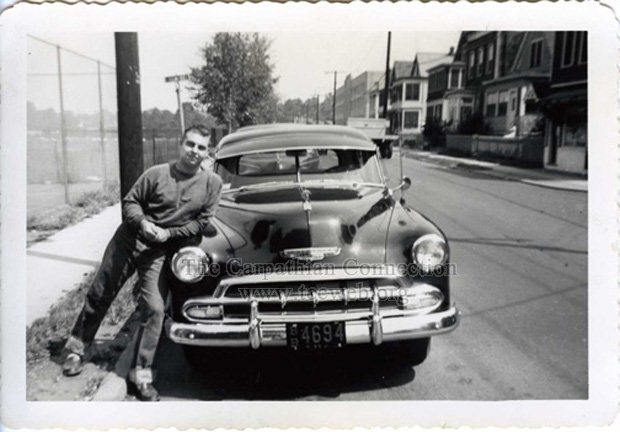
Market Street & Jewel Street
Our Lady of Sorrows Roman Catholic Church
Located at the corner of Market Street & Jewel Street
Photo Courtesy of Ross 'Sal' Greco
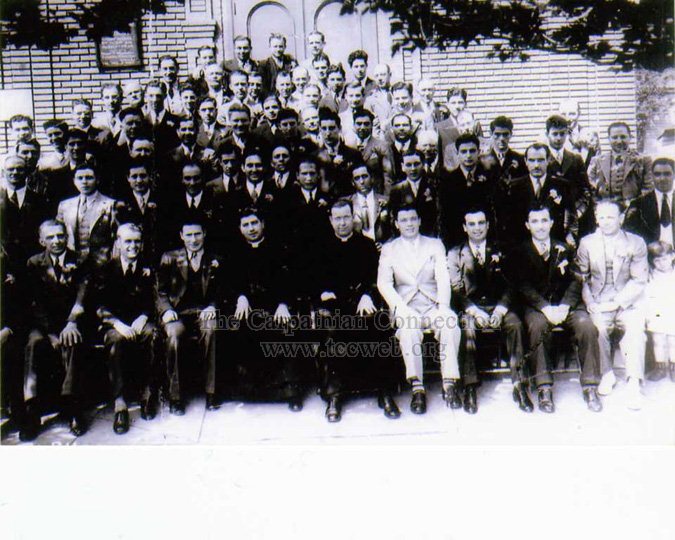
Semel & Palisade Avenue
View of old brick yard
1953
Tommy Arts
Courtesy of Pete Brunda
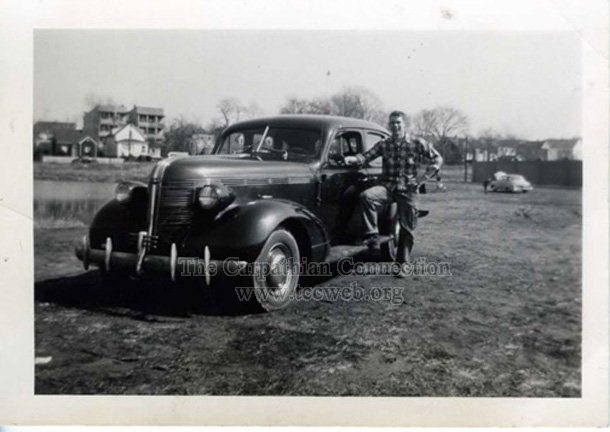
View of old brick yard
1953
Tommy Arts
Courtesy of Pete Brunda
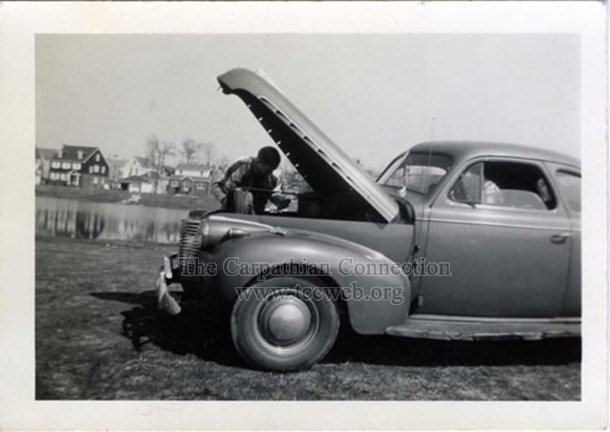
Garfield School No. 4
1950
Courtesy of Ross 'Sal' Greco
Front Row John A. Stellingwerf, Carol M. Smith, Theresa C. Loggia, Jacqueline M. Scaglione, Mary Monestero, Lorraine Spinelli, Dorothy A. Kudlacik, Salvatrice Spoto, Edward Miller, James Rappise
Second Row Miss Vera Dillistin, Ruth Kroll, Betty M. Rotzko, marie E. Dolcemascolo, Diane E. Horn, Loretta k. Rzamojta, Mary Pastor, Constance J. Kasica, Claire Augustowski, Arlene Horn, Helen R. Ruda, Ross J. Greco
Third Row Frank Cian, Nelson Collins Jr., Rudolph J. Monteleone, John J. Tella, Joseph J. Cassata, John Krejc, Alfonso P. Vaccaro, Tddy Kasperski, Kenneth G. Majerscak, John Youhas, Dennis Santo
.jpg)
Holy Name Cadets at Garfield Stadium
Welcome Home 1948
Courtesy of Rudy Monteleone
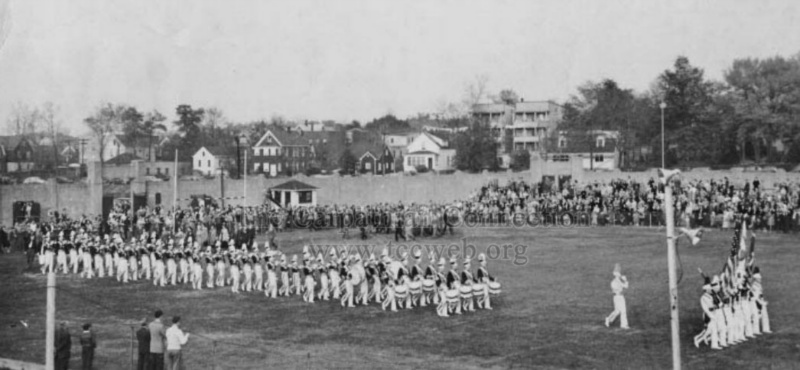
Happy Rollers, Inc.
1940
Courtesy of Phyllis Greco
John Ferrara, John Schiaci, John R. Greco, Joe Camolilla, Tony LoGuidice, Joe Zonca, & Mickey Trechak
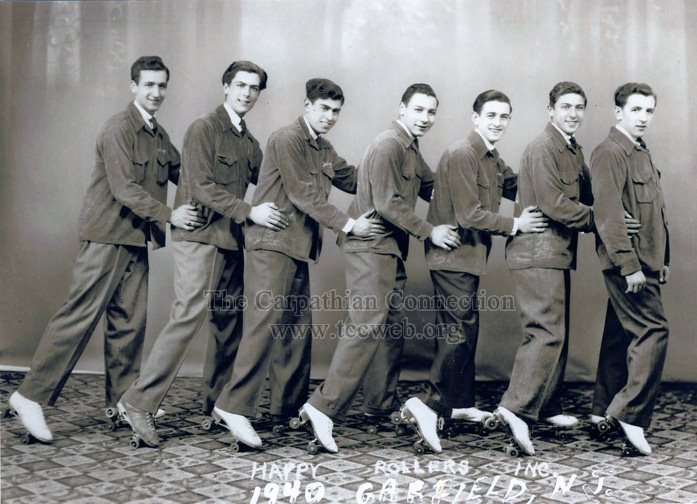
144 Men From the City of Garfield
Served Valiantly and Gave Their Lives In
WWI, WWII, Korea & Vietnam
Photos Courtesy of Steven M. Osifchin


World War I
John Adema, Ciro Barcellona, Frank Benda, Frank Cuoco, James A. Hepworth, Michael J. Hornick, Edward Kalf, John Noack, Rosario Trentacosta, Joseph Oliva, John Prosinski, John Roehrich, Pasquale Versace.
World War II
August Albano, John Alfieri, Gennaro Amoruso, Anthony Bigica, Bennie Ballone, Andrew Barroco, Philip Benati, Ely Berenson, Joseph Biss, Samuel Boback, Andrew Bobela, Joseph Bobela, Joseph Bocchio, Thomas Bongiorno, Michael Botcho, Henry Bruning, Edward M. Buczek, Clarence Bush, John Cahayla, Thomas Calandro, Vincent De Gregorio, Matthew Daniel, Benjamin De Peri, John De Peri, Charles De Salvo, Peter J. De Wolff, Tadeus Doviak, Bruno Drozd, Thomas Dutton, John Duva, Joseph Eifried, John Elcisak, Howard Fackinier, John Fatuova, Michael Fedush, Jr., John P. Ferrara, Henry Ferrario, Charles J. Foelding, Walter Fornalik, Walter Furtak, Walter Buczek, William Galletly, Walter Gancrz, John Gasko, Walter Gemski, Michael Grega, John Grembowitz, Ralph Gutches, Michael Haschak, Andrew Hornik, Joseph Hilt, Edward C. Jancsak, Chester Janda, Joseph F. Jarosz, Henry J. Kasica, Mitchell J. Kasica, Frank Kayser, Arthur Kinner, Louis Klos, John Knapp, Paul Korn, Hans, K. Kohler, Demethius Koske, Stephen Kozsukany, Jr., Edward C. Krudys, Mitchell Krumas, John M. Kula, Edward L, Kwasnik, Anthony Lampariello, Anthony Lo Guidice, Louis Lombardo, Matthew Macy, Valentine J. Maciag, Frank Marut, Erasma N. Matera, John Mocilekko, Lewis J. Moore, Stanley Myles, John Nakonechny, Jr., Michael Natalie, Alexander J. Norcia, Anthony Nykyforczyn, Edward Pavick, Frank Pilliteri, Burno Pordon, Carl Raia, Walter Reiss, Milton H. Rozek, Francis Russell, Anthony Sachon, Edmund M. Sadloch, Stanley Saganiec, Salvatore Santora, James A Sasser, Joseph Serbeck, Frank Sedita, Raymond W. Seifert, Andrew Serkanics, Anthony Simone, Andrew J. Siwiec, Stanley Skiba, Stanley Sobala, Peter Spalluta, Michael J. Spero, Chester A. Staron, Alfred Staudt, Stephen Stepancsek, Melvin Stoddard, Zolton G. Tapp, Oldrich Tauer, Joseph Tempio, Joseph G. Tengi, Joseph J. Vagoun, Albert Verbinski, Peter Uram, Edward J. Vagoun, Albert Verbinski, Peter Yacyniak, Edward Zalewski, William Zurynetz, Milton H. Zwiazek, Andrew J. Siwiec.
Korean War
Paul Brunda, Paul Lucik, Robert Szayway, Frank Galimi.
Vietnam War
John Barsch, Craig J. DeVore, Tyrone Hill, Joseph S. LoFaso, Anthony Manganello, Jr., Joseph Morriggi, William Sipos, Kenneth F. Schorndorf, Mark I. Stephanac, Anthony J. Tencza, Vincent Weedo, Jr.

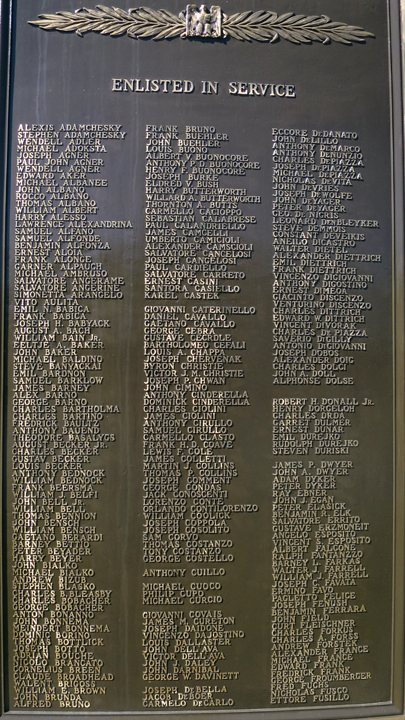
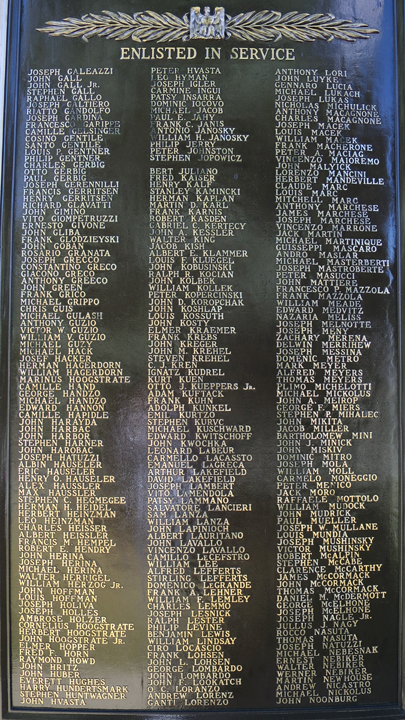
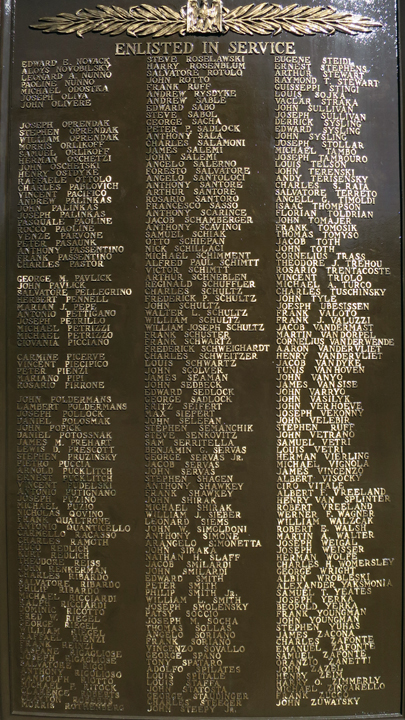

by Joy E. Kovalycsik
Memorial Cross & Chapel at St. Peter's Cemetery
Photos Courtesy of Steven M. Osifchin



In response to the constant influx of Ruthenian and other Slavs to the areas of Passaic and Garfield the need was desperate to have a proper place of burial for Ruthenian Greek Catholics. The only cemetery in the area at the time was Saint Nicholas Roman Catholic Cemetery. A committee was formed in 1895 to purchase land for a cemetery so Greek Catholic Ruthenians would be buried according to their own rite and traditions. On March 24, 1897 Saint Peters Greek Catholic Cemetery Association was formed by the following: Officers: George Kmetz, J.Wilchovsky and P. Gladis. Directors of the Association were A. Zoscsak, J. Timko, M. Dudascsik, A. Gyucyak, G. Pircis and M. Mancyak (taken from stone tablets at entrance to Cemetery). The cemetery remained in private hands until it was taken over by a construction company that performed grave opening work. It was the construction companies plan to sell off remaining graves. The decision was made to "open" the cemetery to any denomination, "close" it to further burial and will only remain for those who hold a deed. In the recent past, the cemetery has not been as maintained as in previous years. Due to its set back location, with no full or part time caretaker or any security measures, visiting the cemetery alone is not wise. Numerous grave monuments have been damaged or taken, especially those made of metal. As the cemetery gates are always left open, the incentive for individuals to loiter at the cemetery is high.
The cemetery is still utilized by Greek Catholic and Orthodox members. It is one of the few cemeteries in New Jersey that cannot be accessed via car, you must walk from the road in front of the main gates. Saint Peter’s was utilized every Memorial Day when priests from the Greek Catholic and Orthodox churches held a pannihida service for those interred. This practice stopped in the later 1990’s as few were left to attend. Many former deed holders in the 1920’s transferred their titles, and sometimes, their relatives, after Saint Michael’s Greek (Byzantine) Catholic Cemetery in South Hackensack opened. There was also intra-religious fighting when the Orthodox faction gained major control and this left Greek Catholics without recourse. The chapel also ceased to be operational in the 1990’s, it is now used for storage. An interesting historical note for this cemetery was in regard to purchasing graves. Immigrants who could not obtain loans from banks or who did not have a lump sum in cash could put a "lien" on their home properties until the purchase price was paid in full. One must give credit to the owners of this cemetery; some immigrants took years to pay off the entire purchase price and no plot owner went without burial according to their own beliefs.
Saint Peters Greek Catholic Cemetery is a jewel not to be overlooked in anyone's search for their Ruthenian heritage.
A firm named Knoble Construction, who assumed management of the cemetery after the all the private committee members passed away, would perform a search of surnames for a modest fee and offer photocopies of old burial records. As of 2020, it appears another construction company has replaced Knoble Construction and they now manage (i.e. open and close a grave) internments.
Garfield, New Jersey
Photos Courtesy of Steven M. Osifchin
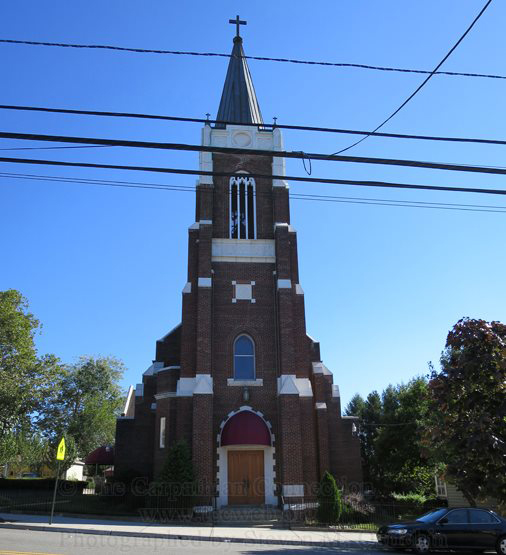

Holy Trinity Slovak Evangelical Lutheran Church was organized on August 10, 1892. The church began with fifteen Slovak Lutherans who wished to have their own house of worship. Started in Passaic, New Jersey, at first services were conducted at the Presbyterian church located on Monroe and Third Streets. In time, membership grew with the influx of new immigrants who were Slovak Lutheran from the former Austro-Hungarian Empire regions. During the first two years the spiritual needs of these pious individuals were served by a theology student, Mr. K. Molnar. As time progressed, the members wished to build a church in Garfield and the first house of worship was completed on April 20, 1902 at a cost of $2,447.00. During the beginning years, it was very difficult to find a pastor to tend this flock. Various pastors such as the Rev. L.A. Engler of New York City and the Rev. Daniel Bella of Port Chester, New York tended to the Slovak Lutherans needs. Holy Trinity still remained firm and looked for the day when they could have a full time pastor. Obtaining a Slovak speaking Evangelical pastor from Slovakia was difficult during the period of 1880 through 1900. Only a few, but not many, Slovak Evangelical pastors came here but most stayed in the New York City areas. The first full time pastor, the Rev. John Murcek, was installed in 1908 and remained for a period of four years. During his tenure, a rectory was constructed on Summit Avenue and a bell purchased for the church. In 1913 the Rev. Joseph Kucharik was installed as pastor and served until 1920. During these years, more and more immigrants who were Slovak Lutheran were arriving in Passaic and also moving to the City of Garfield. The church membership grew very swiftly due to this. Some of the names who were members of this church during this period were Simcak, Kmetz, Gazdik, Molitoris, Lukac, Velebir, Harbac, Chovan, Socha, Moravus, Bvelebir, Sabo, Bross, Gmetz, Ritoch.
The original church was constructed of wood and as time moved on, a need was seen to improve the church building. A vast undertaking was implemented to construct a new church of stone in gothic style which stands to this day. The beginning estimates of cost were approximately $110,000. This was a large amount for the membership as many were of limited financial means. Finally, after much sacrifice the church was completed and dedicated on September 5, 1926. This church was a monument to the devotion and dedication of the Slovak Lutherans of Garfield and surrounding communities. It is to their credit that this magnificent structure stands today. During 1934 the church undertook the founding of a Christian Day School and had as an original enrollment of approximately 55 pupils. Mr. Andrew Socha directed this school and he was also the organist and choir master for the church. A wonderful addition to the church was the installation of a magnificent pipe organ in 1934 which cost approximately $5,000.00. The fact that these projects were undertaken during the Great Depression which had plunged many in America into financial chaos is a testament to their faith. As time continued the church expanded and the officers of the church cared for the needs of the membership. During 1941 officers were President, John Kmetz, Vice President, John Chovan, Secretary, John Molitoris, Treasurer, John Gazdik and Trustees, Michael Velebir Jr., Michael Lukac and Stephen Velebir. Holy Trinity also had many organizations and societies some of which were the Ladies Aid Society, Ladies Sewing Circle, a Senior and Junior Young Peoples Society, Girls Guild and various choral groups. From the beginning services were conducted in Slovak and English every Sunday morning. As of the year 1942, records note that there were 800 members of Holy Trinity, 369 weddings, 753 baptisms and 55 children in the Christian School.
Holy Trinity Slovak Lutheran Church recently celebrated their 100 year anniversary. While Slovak is no longer utilized in services and the make-up of the congregation has changed, the church still holds dear the Slovak roots of this church. Without the devoted Slovak immigrants who came and tirelessly worked hard, Holy Trinity would never have existed. The church is graceful and is located at the top of a large hill on Palisade Avenue in Garfield. This brick gothic structure can be seen for a long distance. A familiar site to all area residents is the tall brown spire capped with a simple cross. The church also has chimes which play at various times and grace the atmosphere of the City of Garfield. While membership for the church has dropped in recent times, Holy Trinity is a resilient congregation. The church will continue to grow just as the original Slovak founders found ways to expand their beloved house of worship at a time when no one thought it possible.
Garfield, New Jersey
Photos Courtesy of Steven M. Osifchin



Shortly prior to 1900 a small group of immigrants held a meeting at Peter Kovalycsiks hall on Second (now renamed Market) Street in the City of Passaic to discuss building a church. During this time frame, there was no Orthodox church in Garfield nor in the adjacent city of Passaic for immigrants to worship in. Those of the Russian Orthodox faith could only travel to New York City for divine services. Some names of immigrants who met to discuss building a new church in Garfield were John Kuchta, John Krayniak, Michael Timochko, Joseph Chiginick, Thomas Hatala and John Sirak. There were only approximately 24 families who were Russian Orthodox and wished to build their own church. This was no small task given the lack of financial resources of the immigrants. These individuals were devoted to the idea of having a house of worship according to their own faith. After many meetings and great financial sacrifices, a parcel of land was purchased on the corner of Cambridge Avenue and Commerce Street in Garfield. The total cost for this land in 1901 was $475.00. The cornerstone was placed on July 3, 1901 with the Right Reverend Z. Raphael who was an Assyrian priest and later became the first Orthodox Assyrian Bishop in the United States. After great contemplation the name for the church was decided as "Three Saints" after the memory of the early church fathers. The church was placed under the jurisdiction of Archbishop Tikon who later would become Patriarch of the Russian Orthodox church. During the early years of Three Saints, Reverend Fathers Alexander Hotovitsky and Elias Zotikoff of New York City oversaw the spiritual needs of the membership. When the church building was finally completed, Reverend Anthony Doroschuk was assigned to Three Saints. The first church was made entirely of wood and was a very beautiful church. One main cupola was surrounded by three smaller ones and the interior murals were imported from Russia. The membership continued to grow due to the constant influx of immigrants from many parts of Eastern Europe and Russia. It was not long before the church was totally self-supporting. From 1903 to 1905 the church saw two priests, Fathers Kelko and Olchevsky. In 1905, the Reverend Peter Popoff was assigned to Three Saints and the church expanded rapidly.
The Original Three Saints on Cambridge Avenue in Garfield (Photographed in 2014)

Father Popoff organized a Parochial school and also the church choir. By the time of his departure in 1908 the size of the congregation had doubled. By 1911 the need for a permanent rectory was desperately needed and the priest of this period, Father Michael Chervinsky completed this addition to Three Saints. In 1913 the debts which had been incurred were reduced dramatically and during this same year, the church was consecrated by Metropolitan Platon. Many priests served Three Saints during the period of 1913 though 1915 and many additions and upgrades were undertaken. One sad note was during August 14, 1915 a tragic fire destroyed the entire church. After so much hard work and fifteen long years of struggle, the membership of Three Saints would have to begin all over again. Reverend Alexander Alekhin worked tirelessly to keep the membership together and worked hard to to rebuild all that had been lost. With renewed hope, the congregation purchased more land which was next to the church property and set their minds to build an even bigger and more beautiful church. While rebuilding the church a new school and also, a church auditorium were also added. These massive construction undertakings were amazing given the times and the limited financial resources available to those who had immigrated to America. In the late fall of 1916 the church building was almost finished and the number of families attached to Three Saints had grown and numbered over 300 families.
On March 16, 1918 Reverend John N. Telep was assigned to Three Saints. The church was heavily in debt due to the construction of these new buildings all within the short span of two years. While the exterior of the church was finally finished, the interior was very limited due to a lack of funds for furnishings. During the five year period of Reverend Telep’s tenure, it is to his and the congregations credit that the church debt was reduced which, afforded the means to redecorate the interior in full. During 1924 through 1925, the interior murals were painted by an artist from Russia, Photius Bodasiuk, with a total cost of $4,500.00. More renovations and construction were added such as the addition of a cellar to the church and the installation of heating and lighting which totaled $5,500.00. Another $1,500.00 was utilized to purchased oak pews which were not part of the original church. In 1934 a beautiful crystal chandelier was purchased from the former country of Czechoslovakia which cost approximately $1,200.00. Three Saints continued to grow and gained many members from the surrounding cities and towns. There were many organizations which the church sponsored such as The Russian Orthodox Society of Three Saints, Saint Mary’s Sisterhood, Three Saints Choir Club, Mothers Club of Three Saints Church, Russian American Citizens Club and Fraternal Order of "Roova", Branch No. 38. Three Saints Parochial School was a fully functioning school and taught the congregations children reading and writing in Russian, Prayers, Music (Choir), Bible History and Catechism among other subjects. Classes during the 1942 period were held daily Monday to Friday afternoons from 4:30 p.m. until 6:15 p.m.
As of 1942, the Board and Officers of the Church Committee were: The Very Reverend John N. Telep, Rector, Professor Simeon Evdokimovich Andreyeff, Choir Director, President Theodore Telischak, Vice President, Stephen Elias Wolchko, Treasurer, Joseph Chiko, Assistant Treasurer, Andrew Tarasewich, Secretary, Michael Billy and Assistant Secretary, John Lisack. The Trustees for Three Saints Russian Orthodox church were John Shirak, Senior, Lester Palubniak, Stephen Yuhas, Michael Shack, Stephen E. Wolchko, Ivan Gursky, Ephim Chorney, Alexander Nosal, Theodore Rohatinsky, Theodore Telischak, Andrew Tarasewich, Stephen Kruge and Peter Volchko. As time continued Three Saints became a highly recognized addition to the City of Garfield’s skyline. The church was a small sized structure but, was graceful. The brick exterior along with the lovely cupolas could be seen for a long distance. The interior of this church was very warm and friendly. The icon screen which divided the altar area was a beautiful masterpiece and combined with the graceful murals and icons which adorned the walls and ceiling, Three Saints was a work of art totally within its own right . As time progressed the church would finally leave their original home on Cambridge Avenue. This move was made to a large tract of land that held the church Cultural Center which has been utilized by many in the City of Garfield for numerous functions. A magnificent church was finally constructed on the Outwater Lane property and the old church was eventually sold. Three Saints is a magnificent church which can be seen for miles. Its golden domes are a sight not to be missed while traveling though Garfield and, the church itself is breath-taking to view. The new interior of the church is also glorious. The dark wood based icon screen is a work of art and the floor is made of marble. New stained glass windows have been added during recent years which add to the glory of this beautiful house of worship. From a limited discussion by a few individuals to build their own church in Garfield, Three Saints has come very far since 1900. This church is still expanding today and, is gaining new members which are filling this church from Russia and other parts of Eastern Europe. The hard work and total devotion of this congregation is to be admired. Three Saints has come very far in 100 years and their church which all admire on Outwater Lane is truly a monument to the Russian Orthodox faith.







Courtesy of Evelyn Salerno
Evelyn's great grandparents Mr. & Mrs. Louis Marrone were early pioneers of Garfield and helped to establish Our Lady of Mount Virgin Church.
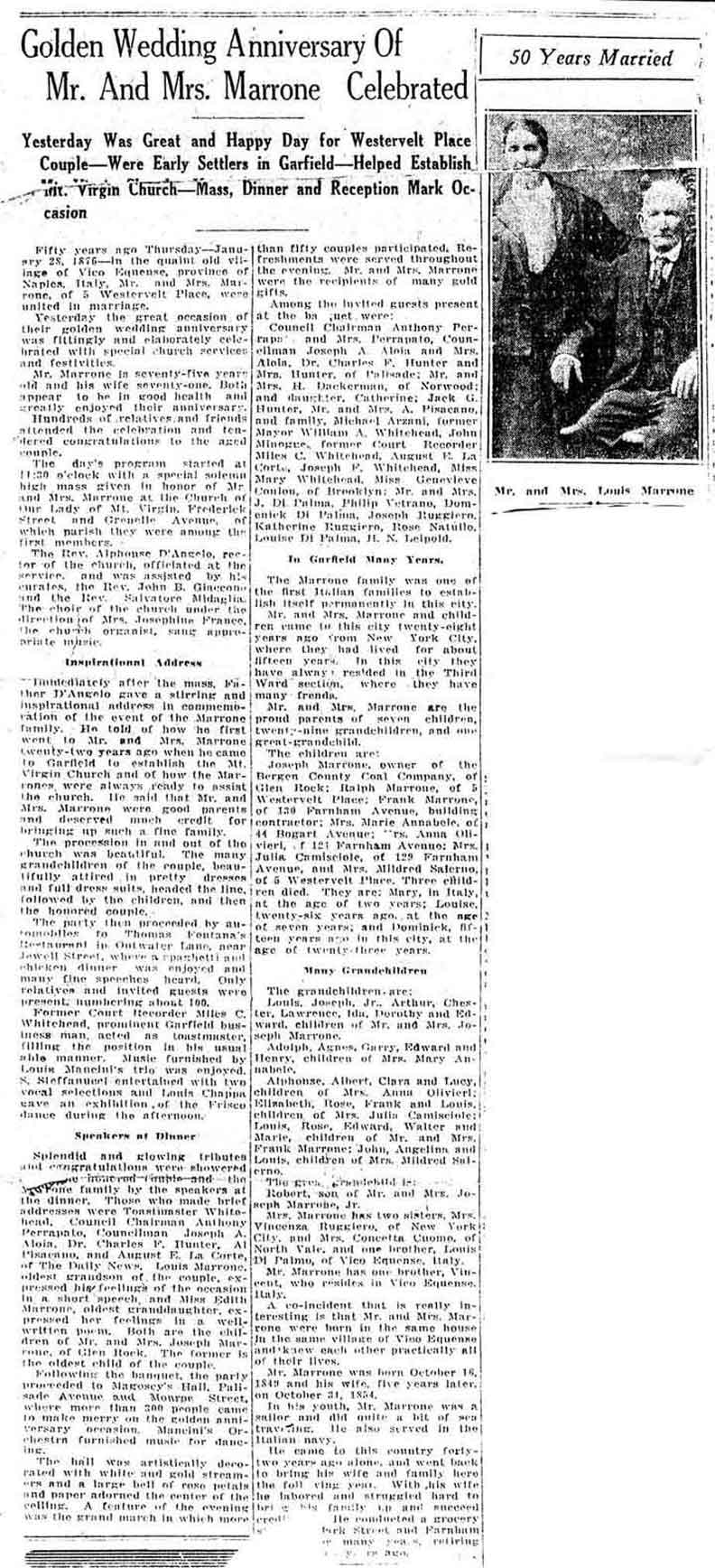
Garfield, Bergen County, New Jersey
With Information Provided by, Evelyn Salerno
Photos Courtesy of Steven M. Osifchin


During the last half of the 19th century, numerous Italian immigrants migrated to America seeking a new life. These hard working, religious people arrived in the City of Garfield and made new homes for their families. Being very religious, they wanted a church of their own. Temporarily, they had to attend mass at St. Francis De Sales Church in Lodi and Saint Nicholas in Passaic. This was a hardship in the days before mass transportation. Not to be deterred, a hardworking group of men, some being Mr. Louis Marrone, Mr. Samuel France, Mr. Nick Linosi and Mr. Priore met and made the decision to locate property for a church. These men petitioned the bishop to send them a priest so services and the sacraments could be offered. The bishop sent a priest to them, Father Po, and work began.
.jpg) Father Po arrived in Garfield in 1901 and immediately set out to find a suitable site to offer Holy Mass. Father Po worked tirelessly and had a number of disappointing setbacks. Finally, because of this and due to a lack of funds, the Marrone barn on Clark Street near Farnham Avenue was graciously offered for services. The Marrone family were dedicated to their faith and removed the farm animals from the property. They also began renovating the barn so it would be a fitting place for the priest to say Holy Mass. Father Po was offered the use of a horse and carriage. This was a blessing as he utilized this mode of transportation to bring items of furniture from Newark. Mrs. Marrone who was a good and pious lady donated money for the purchase of a chalice. She also took her own home possessions of statues and religious pictures to be placed in the barn. This made the interior a worthy place to hold Holy Mass.
Father Po arrived in Garfield in 1901 and immediately set out to find a suitable site to offer Holy Mass. Father Po worked tirelessly and had a number of disappointing setbacks. Finally, because of this and due to a lack of funds, the Marrone barn on Clark Street near Farnham Avenue was graciously offered for services. The Marrone family were dedicated to their faith and removed the farm animals from the property. They also began renovating the barn so it would be a fitting place for the priest to say Holy Mass. Father Po was offered the use of a horse and carriage. This was a blessing as he utilized this mode of transportation to bring items of furniture from Newark. Mrs. Marrone who was a good and pious lady donated money for the purchase of a chalice. She also took her own home possessions of statues and religious pictures to be placed in the barn. This made the interior a worthy place to hold Holy Mass.
The first altar was constructed by Pasquale Inserra and Father Po resided with the Marrone family temporarily; later he moved to Harrison Avenue. Since the barn had no bells to summon worshipers to church, two of the Marrone boys walked up and down various streets ringing cow bells to let members know it was time for Holy Mass. The first altar boy of this infant church was Frank Marrone. As the church began to expand a meeting was held and the decision had to be made what name the church should be given. A meeting was held with Father D’Angelo, Louis Marrone, Samuel France, Mr. Priore and Raffaele Fusco. Many names were discussed but in the end, it was finally decided to dedicate the church to Our Lady of Mount Virgin which is a famous shrine near the members’ native Naples. Finally, a new church was born, Our Lady of Mount Virgin.
At this time the choir consisted of Mary and Anna Marrone, Louisa Bianca, and Agnes Matera. The early altar boys of the parish were Frank Marrone, Sullivan Bianco and Michael France. Mr. Farraele Fusco had a picture of Our Lady of Mount Virgin which was painted in Italy. This picture was sent to America and many miraculous incidents were connected with this portrait. It was painted by the Italian artist, Don Luigi. In May, 1904 Father D’Angelo purchased the property on Frederick Street and Genelle Ave. A temporary Chapel was erected by Mattia Imparato. At this time, the parish was officially incorporated under the name of Our Lady of Mount Virgin. Louis Marrone and Vincenzo Frasche were the first official trustees of the parish. The parish was serving all those of Italian heritage in Garfield, Passaic and Lodi. In 1907 a permanent church was built next to the site of the present church. The church grew tremendously and a new Church was guilt in 1927. It was designed by John J. Baldino and dedicated on November 27, 1927.
In 1930 after twenty seven years of service Father D’Angelo was replaced by Father Dooling. The arrival of this young and vigorous priest was a blessing for Our Lady of Mount Virgin. The parish expanded tremendously and the spiritual life of the parish was very strong. Father Dooling reorganized the Catechetical instruction program and he then began a drive to secure funds to decorate the interior of the new church. In 1931 Father Aloysius joined Father Dooling as assistant. In September 1937 Maestre Pie Filippini arrived in Garfield. They established a residence at the new convent located on Harrison Avenue. The ceremonies welcoming the Filippini sisters were conducted personally by Archbishop Thomas Joseph Walsh. The first Mother Superior in Garfield was Sister Gilda Dal Corso. Unfortunately, she had to leave due to ill health. Mother Antoinette Argenti replaced her. In 1939 the church was again updated. On February 5, 1940, tragedy stuck the parish when a fire completed destroyed Our Lady of Mount Virgin Church. Not to be deterred, Father Dooling immediately contacted Fanning and Shaw of Paterson, Architects and Engineers to review the situation. The auditorium was so badly burned nothing could be done but to raise the building. It was decided to add a wing to the church which was to serve as an auditorium and classrooms for the new school.
During this time, the church received permission to utilized School No. 3 (Mark Twain School) for services and Sunday Mass. A temporary altar was put in place and weekday Masses were held in the convent chapel. On Palm Sunday and Easter Sunday, permission was received to hold holy week services at the Lodi High School Auditorium. Father Dooling announced the new drive for funds to construct another church. The church was built by Joseph Muscarelle. It was dedicated by Archbishop Walsh on November 24, 1940. Shortly after the completion of the new church, the United States entered World War II. Many young men of the parish, over one thousand, served their country in this terrible war. In honor of their service and sacrifice, Father Dooley decided to build an auditorium which would be a dedicated as a permanent memorial in their memory. In 1946, Father Dooley was transferred to St. Francis Xaiver in Newark. The members of the church were heart-broken; their priest had given 16 years to the church and for their welfare. Father Casserly was named the new pastor of Mount Virgin Church. Many improvements and construction projects were held during Father Casserly’s tenure. In 1948, Our Lady of Mount Virgin Church finally satisfied their debts and the mortgage on the church was burned.
In 1948 a momentous occasion took place when the Pilgrim Statue of Our Lady of Fatima visited Our Lady of Mount Virgin Church. While the statue was only at the church for 24 hours, large crowds of people came to pray and meditate in front of this very holy statute. It is mentioned over thirty thousand people came to see the Pilgrim statue within the 24 hours it was at the church. After this, the old convent was in need of repairs. It was decided to build a new modern convent for the sisters. Also, at this time plans were made for a new auditorium and rectory. Also, on July 16, 1950 ground was broken for a new parochial school. In 1966 Father Casserly was appointed pastor of St. Matthews Parish in Ridgefield. A new pastor, Father Sylvester Livoisi was installed and in 1972 was succeeded by Father Joseph F.X. Cevetello.
The Church of Our Lady of Mount Virgin has seen many wonderful blessings from God in the many years of existence. As of 1972, there have been over 2,500,000 communions, 13,420 baptisms and 4,289 marriages. Also, since the beginning it is estimated over 85,000 masses have been said at Our Lady of Mount Virgin. There have been many events at Our Lady of Mount Virgin, some being, in 1957 a new organ was dedicated, in 1976 the parish celebrated their 75th anniversary, in 1979 Father Henry Naddeo became pastor and in 1994 Father Naddeo left and Father Paul Bochicchio became the seventh pastor of Our Lady of Mount Virgin. In 2001 Father Bochicchio was named “Prelate of Honor” with the title of Monsignor in conjunction with the church celebrating their 100th anniversary. In 2005 Monsignor Paul was assigned to another church and Father Peter Palmisano became the eighth pastor of Our Lady of Mount Virgin Church.
Our Lady of Mount Virgin Church has always been a spiritually active parish. The dedicated parishioners are always willing to work hard for the betterment of their church. Numerous societies in the church are Knights of Columbus, Sacred Heart Society, San Pio Prayer Group and ministries such as the Youth ministry and Sick and Home Bound Ministry are vital to the life of the parish. Also, a “Mass of Remembrance” is held each year in December sponsored by the Aloia Funeral Home of Garfield. The mass is to recall those who have died during the past year. It is open to all, no matter where they reside, who have experienced a loss. This mass is well known throughout the area and is deeply touching. Each year, this Mass of Remembrance is a gentle comfort to an unknown number of grieving individuals. Lastly, the popular “Italian Festival” is held on the church grounds yearly. It is a time to enjoy good food and good friends and has been a popular attraction since the beginning. Our Lady of Mount Virgin Church has come far with God’s blessings since its founding. A caring and welcoming Church, they look forward to the future so the work that was begun in 1901 can continue.


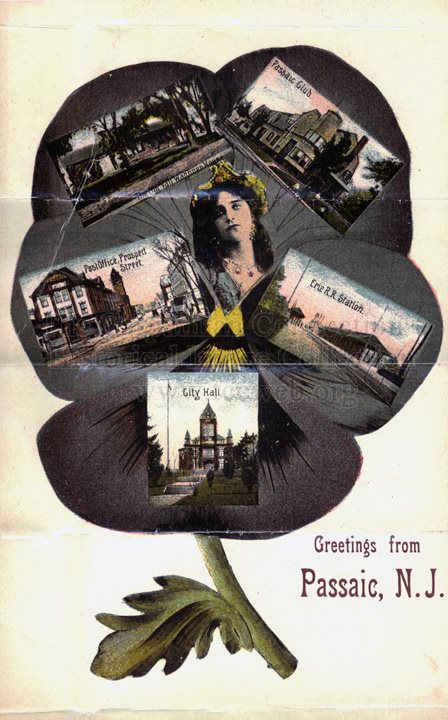
by, former City Historian, Mark S. Auerbach
by, Edward Kimak
by, Anna Palko
by, Joy E. Kovalycsik
Courtesy of Cathy Kravchak Carney, William Cook, Dorothy Crowley, Alyssa Ross Eppich, Curtis Jacks, Diane Jadlowski, Fran Longwell, Suzanne Macht, Susan Opihory, Robert Prettyman, Linda Stufflebean
Courtesy of Greg Ricciardi of G.T. Ricciardi Antiques in Virginia
Courtesy of Julia Biss (1921-2007), Slavo Gladis, Dennis Halusker, Curtis Jacks, Edward Kotun, Vincent Kovlak, Mary Ann Lutz, Susan Opihory, Linda Stufflebean, Andrew Swistak, Jean Virag-Baker, Matthew Zach, Scott Zvorsky
Courtesy of Susan Opihory
May Include Arendacs, Hrinya, Kundrat, Opihory, Pisnik, Pruzinsky
Please contact us at editors@tccweb.org to make an indentification
Courtesy of Kathy Stefancik-Troast
by, former City Historian, Mark S. Auerbach
Part I
One hundred and twenty-five years ago on Wednesday, April 2, 1873, an act to incorporate the City of Passaic was signed. As we celebrate 125 years as an incorporated city, we also celebrate 320 years of existence, as the area of modern day Passaic was originally settled in 1678 by Dutch pioneers. The following overview of the history of the City of Passaic is based upon information from many different sources and even to this day numerous facts are questioned and debated as to their accuracy and or validity. Please keep in mind that over a long period of time historical facts tend to become distorted, embellished, exaggerated and in many cases outright falsified. With this said, it is the hope of this writer that you will enjoy the following brief overview.
On April 4, 1678, a Dutch settler and trader, Mr. Hartman Michielsen (later Vreeland), purchased a "great island in the river of Pasaick near by Aquickanucke by the Indians called Menehenicke (translation of the Dutch from the original deed)." The island came to be known as Dundee Island and today that area is known as Pulaski Park and Dundee Island Park. Between 1679 and 1684-1685 deeds and patents were acquired between the original settlers and the native Americans, the Lenni-Lenapi, that secured for the original settlers the land including and surrounding modern day Passaic. In October of 1693 the Township of Acquackanonk was created in the northern part of Essex County. In February of 1837 the County of Passaic was created from parts of northern Essex and western Bergen County. In 1854 the Village of Acquackanonk took the name of the river that it bordered, Passaic. By the late 1860's the Village of Passaic was steadily growing in population and commercial and residential size. This growth was mostly due to the completion of the Dundee Dam and Dundee Canal in July of 1861. The vastly enlarged and now abundant fresh water supply became the basis for the industrial boom that would fuel Passaic’s rapid growth. Coincidentally, between April 2, 1873 and exactly five years later, a series of Acts, enacted by the Village of Passaic, terminated in its incorporation as a city. The last half of the nineteenth century and that part of the twentieth century before World War I were great growth years for Passaic’s numerous factories, mills and mom and pop businesses. The population growth during this time was over ten fold and peaked in the 70,000's during the decade after World War I.
Some of the more memorable factories/mills that attracted and employed a vast majority of Passaic’s citizens were The Botany Worsted Woolen Mills, The Forstmann Woolen Mills, Passaic Cotton Mills, The Gera Mills, The McLean Cotton Mills, Brighton Mills, The Waterhouse Mill, The Acherson & Harden Manufacturing Co., The Okonite Company, The Pantasote Company, U.S. Rubber Company, Manhattan Rubber Company, Paterson Parchment Paper Company, J.L. Prescott Company, Reid and Barry Co., Passaic Print Works, The Dundee Power and Water Company, The Falstrom Company, Pitkin & Holdsworth Company, Jacques Wolff & Company and many more too numerous to mention but all equally important. Passaic has always been a city of immigrants and always will be. After the original Dutch settlers of the latter seventeenth century, came the English, the Scottish, and a small but varied mix of mostly Western Europeans following the American Revolution. The first half of the nineteenth century saw the arrival of the Germans, Irish, more English, Scandinavians, Austro-Hungarians (i.e. those from the former Austro-Hungarian Empire which included Ruthenian, Slovak, Polish, Ukrainian, Russian, Hungarian and other heritages) and a mixed group of political émigrés from all over Europe. The latter half of the nineteenth century saw the arrival of more Germans, Irish, and a small influx of African-Americans, mostly former slaves. The last fifteen years of the nineteenth century saw the beginnings of the great waves of immigrants that would populate Passaic and all other industrial cities in America.
Large numbers of immigrants came from Italy, Germany, Russia, Ukraine, Poland, Austria-Hungary, and lesser numbers came from virtually every other county in Europe and points beyond. After World War I Passaic saw a migration of Southern Blacks to our city, as did most other industrial northern cities. After World War II, Passaic saw an influx of Puerto Ricans, the first Hispanic group to come to our city in any numbers. In 1956, during the Hungarian revolt, many Hungarians came to Passaic to join their relatives and friends. Since the 1970's many Hispanic immigrants from Central America, South America, Mexico and the Caribbean Island countries have chosen Passaic as their home, to make a new start and share in the "American Dream." As I have stated before, we will always be an immigrant city. The religious history of Passaic is as diverse as any great city in the world. The Dutch (Protestant Reformed) came here first in 1685, then in the middle years of the nineteenth century came the Methodists, the Episcopalians, the Presbyterians, the Protestants, the Catholics, (both Eastern and Western Rite), the Eastern Orthodox, the African Methodist Episcopalians, the Baptists, the Jews, the Lutherans and a host of other religious denominations that more often than not were originally part of the afore-mentioned groups.
The population of the City of Passaic started along stretches of the Passaic River for the obvious reason of transportation. As the city grew in size, the first population concentration was in the area of Prospect Street and Main Avenue as this was close to the landing and beginning in 1831 the newest mode of transportation was the railroad (horse drawn until 1834). With the advent of waterpower for the factories the city needed to expand its housing stock for its citizens, so in rapid order the Eastside or Dundee section quickly filled up. Towards the end of the nineteenth century the current First and Fourth Ward areas started to build up. The Hill Section of Passaic, the homes of the captains of industry and the wealthy, stared to spring up in the middle 1870's and peaked by the end of the first decade of the twentieth century. The Second Ward area of the city started to rapidly develop in the beginning of the twentieth century and became a predominately Italian and Jewish area until the end of the 1940's. The Third Ward was the last to physically develop as it was "too far" from the rest of town to be desirable. Today, Passaic, a city of 3.25 square miles of which 1.25 square miles is parkland is a very densely populated city, especially in its First, Second and Fourth Wards.
The City of Passaic today has fourteen public schools, which includes one high school, one middle school, a learning center, and eleven elementary schools. Our educational history in Passaic has been one of excellence in education for the better part of one hundred and thirty years. Everybody who has ever attended school in Passaic will always identify with their neighborhood elementary school. Jefferson #1, Washington #2, Franklin and/or Mario P. Drago #3, Lincoln #4, Lincoln Junior High or Middle School #4. Harrison #5, Lafayette or Martin Luther King #6, Grant #7, McKinley or Pulaski #8, Columbia or Etta Gero #9, Roosevelt #10, Memorial or William B. Cruise #11, Woodrow Wilson #12, Passaic High School, School #13 and School #14. Passaic has a proud history of parochial schools. Pope Pius XII High School is no more but fondly remembered. St. Nicholas Roman Catholic, Mount Carmel Roman Catholic, St. Anthony’s Roman Catholic, St. Michael’s Greek Catholic (Byzantine), Holy Trinity Roman Catholic, St. Joseph’s Roman Catholic, St. Mary’s Slovak Roman Catholic, St. Nicholas Ukrainian Catholic, St. Stephen’s Magyar Catholic, Hillel Academy, Yeshiva K’Tanah and others have or still do contribute to the fine education of our city’s children.
PART II
Movie houses were an integral part of the Passaic landscape for many years and just their names conjure up many great moments for many of us. The Palace on Market Street was a longtime memory for the immigrant groups that crowded our city’s eastside for several generations. The original Montauk, on the corner of Madison Street and Main Avenue was a famous vaudeville theater until replaced by the current building in 1924 (it was a fine family movie theater). The Capitol Theater, on Monroe Street, was originally a vaudeville house and then a movie theater. Most will remember it for the great rock concerts under the ownership of John Scher. The Central Theater, the site of the legendary Glenn Miller’s last American performance in September of 1942, was in its day the finest theater around. On opening day in September of 1940 the entertainment was Charlie Spivack and his band, the Andrews Sisters and Moe, Larry and Curly; also known as The Three Stooges. The Rialto, on Lexington Avenue, had a storied life. It was later called the Lincoln Theater, the Lexington Theater and finally, the Fine Arts Theater. Last but not least is the Playhouse on Main Avenue (currently the home of Home Liquors). It was a fine movie theater but it too started its life with vaudeville and live stage shows.
Previously, I touched upon the railroad coming to Passaic in 1831. It was originally horse drawn and people of the time preferred horse drawn as opposed to steam driven, an unknown and obviously dangerous advance in transportation. By 1834, all the trains were powered by steam engines and the future was here. Originally, the train ran from Passaic Bridge (Aycrigg and Main Avenues) to Paterson (near Grand Street.) Eventually, the success of the railroad for both passengers and freight caused its expansion south to Jersey City and north to upper Bergen and Passaic Counties and west to Morris County and to points beyond. In the later 1890's the time to mid-town Manhattan was the same as it is today, 100 years later. The train lines that ran though Passaic over the years were the Erie, The D.L.&W. (The Delawanna, Lackawanna & Western, now the New Jersey Transit Line in the Park), the Susquehanna and the Bergen Short Cut (still there). Over the years the City of Passaic has had several names. Acquackanonk was its first as it is believed to be either the name or a variation of the name used by the native Lenni-Lanapi Indians (there are over 200 different spellings known for Acquackononk). Acquackanonk Bridge was the name used by General George Washington in a letter he wrote from here on November 21, 1776 to then Governor William Livingston. In rapid succession we were called Acquackanonk Landing, Paterson Landing, Huyler’s Landing (for Mr. Huyler who owned the general store where the train stopped) and finally, Passaic.
Passaic’s hospitals are of paramount importance to our city and it is by no accident that we have three fine major facilities in our city. The General Hospital Center of Passaic started life in 1892 as the Passaic General hospital, Saint Mary’s Hospital was founded in 1895 behind Saint Nicholas church and moved to the "Hill Section," several years later and Passaic Beth Israel started life as a twelve bed, one floor hospital in 1927 on the second floor of the newly built B’nai Israel Nursing Home on Madison Street. Today, these fine hospitals still serve our city in specific medical areas and both St. Mary’s and The General have opened clinics in areas of our city with acute needs for their services. I have purposely omitted the names of prominent citizens of Passaic because I could never name them all and space and time prohibits it. However, several names must be recognized at this juncture. Mr. Charles McKnight K. Paulison, the man most responsible for developing a large area of our city, laying out many of our fine avenues and streets and having the foresight to plan and envision the beauty that our city enjoyed for over a century.
Mr. Alfred Speer, one of the city’s early entrepreneurial gentlemen, who in addition to being a successful vintner, inventor, newspaperman, and political figure, gave our city its name. Mr. Benjamin Bogert Aycrigg, the first Mayor of the City of Passaic 125 years ago, who in addition was a fine physician, first president of our Free Public Library and an ardent abolitionist. Last but not least is Robert Dix Benson, a very successful industrialist, politician, president of the Board of Education, builder of the Marocco Funeral Home (former Benson mansion) and the man who was singlehandedly responsible for most of the park lands in today’s City of Passaic. The prominence of Passaic’s sons and daughters as they left our city to go into the world to make their fortunes is legendary beyond all expectations. Passaic’s contributions to the world of sports is second to none. The basketball "Wonder Teams" (six in all) from December 1919 to February, 1925, won a world’s record 159 consecutive games, a record that will stand forever. Passaic has contributed more than her share to the major sports leagues and numerous state champions and championships have been attained by our sons and daughters to this very day. The field of entertainment has been led by our own fabulous Shirelles, Beverly, Shirley and Doris and the late Micki (incidentally, they will celebrate their fortieth year of existence this coming May.) Saul "Porky" Zaentz, the three time Oscar winner from the "Corner of Myrtle and Monroe," Joey Dee, who championed a "real dance craze," and Loretta Swit, the most famous "Lips" in television. The aforementioned celebrities are but the tip of the iceberg as far as our home grown talent is concerned. Scientists, inventors, Pulitzer Prize winners, judges, attorneys, screen writers, educators and virtually every level of success has been achieved by citizens from our fine city.
The Passaic Fire Department has a long and proud history that will be celebrating its 130th Anniversary this coming October. From 1868 until 1909, the Passaic Fire Department was one of the premier volunteer departments in the State of New Jersey. From 1909 to date the paid Passaic Fire Department has similarly been one of the premier fire departments in the whole country. Two records of note are that the Passaic Fire Department was the first fully mechanized fire department in the entire country starting in 1910 and that our second Mayor, Bird W. Spencer, was the founder and first president of the New Jersey State Fireman’s Association, which is still going strong over one hundred years later. The Passaic Police Department, like our Fire Department, had its beginnings during our village days and was established between 1870-1871. Prior to 1875, it had various homes in old structures that were considered suitable for the purpose. In 1875, the Police Department found a permanent home on Howe Avenue behind the municipal building, which also housed the Fire Department’s headquarters. In 1923, on the site of the original Number 1 School (northeast corner of William and Passaic Streets), a new Police Headquarters was erected with much fanfare. In 1980, the current headquarters, in the City Hall Municipal Complex, were occupied. For 130 years the Fire and Police Departments of Passaic, New Jersey have served, protected and laid down their lives for their friends, neighbors and fellow citizens. We, the City of Passaic, New Jersey, salute you and thank you for helping us though the first 125 years.
No narrative, overview or observation on the City of Passaic could or wold have been able to be written if it were not for my predecessors. The first city historian, William W. Scott (Willscott Street) did physically preserve a vast part of what we have in our city historical holdings today. As a practicing attorney, Mr. Scott diligently pursued, preserved, and published a vast majority of our early history in a concise, orderly and accurate fashion that has stood the test of time and challenge. His successor, Mr. Robert E. Bristor, who was the son of a newspaper editor, picked up the baton that Mr. Scott had passed to him and greatly enhanced our knowledge of our past with his incisive and diligent research techniques. The current city historian is still learning from his illustrious predecessors but at the same time is humbly aware that his efforts would not be able without their tremendous scholarly research and "pack rat" habits. Mr. William W. Scott and Mr. Robert E. Bristor, I thank you both very much on behalf of myself, but most assuredly on behalf of the City of Passaic. I have often said that history is an ongoing entity, that it is truly a work in progress and that today’s news is tomorrow’s history. All of this is true when it comes to our city. We have demonstrated over many, many years that we are the best, that we produce the best, and that if you want to be the best then come join us in Passaic. Passaic, New Jersey is a microcosm of America, from the colonial experience to urban decay, but with one vast difference, we are here to stay, bigger and better than ever before. To the Citizens of Passaic, new Jersey; I salute you and wish you a very healthy prosperous and joyous 125th anniversary to you and your children and your children’s children. Thank you for the honor of being your historian.
"First Ward between South Street, the Passaic River, McLean Street and up to Hope Avenue
as I remember it - 1916 to 1925"
by, Edward Kimak
Editors Note: Mr. Kimak passed away in June 1994. His recollections are presented here in his memory.
My earliest recollection of living in the eastside of Passaic was going to the weekly Sunday afternoon baseball games at First Ward Park with my father, Vasil, my mother Anna and my three brothers. My dad loved baseball, which he learned after coming here from Austria-Hungary in 1900. I remember sitting on the hillside which was near Fifth Street and cheering for the St. Mike’s who represented St. Michael’s Church just blocks away on First Street. St. Mary’s Church (Slovak) was also in the neighborhood and had a good team too; the rivalry between the two teams was intense. The other two churches in the area Holy Rosary (Polish) and the Russian Orthodox Church on Third Street and Monroe (SS Peter and Paul’s) did not sponsor any baseball teams.
My mom and all the immigrants of those days kept their cold water flats clean. Hard scrubbing brushes and Octagon soap were standard in all the homes. One has to be really old to remember the first Boys Club that was located on First Street between Mercer and Bergen. It was in a loft atop a stable run by Sam Gabor. I really wasn’t old enough to be a member but I sneaked in with older boys at every opportunity. Harry Vanderberg was the director and then later at the new Passaic Boys Club on Third Street. In those days we all walked to a neighborhood school and the school year was divided into two semesters such as 1A and 1B. This was great for any kid who failed in one semester as it gave him a chance to go to summer school and make it up. In this way the student kept up with his class and gave him the interest to stay in school without losing a years schooling contrary to todays programs.
As there was no auditorium in the school I remember a visit by Ms. Helen Keller accompanied by her constant companion, friend and teach, Anne Sullivan. Ms. Keller went into each classroom and gave us pupils a short address of courage. If I remember correctly Ms. Keller tapped her message with her fingers into Ms. Sullivan’s hands who then translated it verbally to us.
My brothers and I always ran to meet our father coming home from work at the Okonite mill, which was located at First Street and the Dundee Canal. We were even more delighted if it was on a Thursday. That was payday and Pop, as we always called him, gave us each 11 cents for the movie. We rushed home, had a fast supper and then made a beeline for the City Theatre. Eleven cents may seem odd to go to the movies with but there still was the ten- percent war tax put on by Washington during the First World War. The city theatre was located on Market Street just about opposite the old No. 2 School. A few years later the new Palace Theatre was built across the street next to the butcher store and Zalewskis Pharmacy. Some of you old timers probably remember the slogan "Yes, Zalewskis is our druggist."
An earlier theatre I remember going to was the Theatre on Passaic Street where I saw my first Charlie Chaplin movie and I remember waiting in line with my family for a couple of hours to get in. Later on there was a small Park theatre located on Passaic and Fifth Street. What I remember about the Park Theatre is one Saturday afternoon when they had a raffle for a small, pedal-pushed fire engine. We all looked forward to winning it but didn’t. One kid in the row ahead of us kept saying he would win it because he carried a rosary with him. Even in those days shenanigans did occur because he did win it! The weekly Saturday afternoon episodes always brought us back as our heroes and heroines were always in dangerous situation at the end and we couldn’t wait to see them getting out of their predicament. Also, we were great fans then of Hoot Gibson, Tom Mix, Ken Maynard and Harry Carey.
In return for free rent my father swept the halls daily, scrubbed the halls and stairs every Saturday. We kids helped and I still remember the smell of mash and then of grape pressings when we took our barrels out. Just a reminder that those were the days of Prohibition and some people made their own alcohol and wine. Many times I ran to Zalewskis Pharmacy for fifteen cents of what was called Hoffman Drops, a potent chemical that today I suspect were Ether. A couple of drops of that in a glass of water in those days was a fair substitute for the whiskey that couldn’t be purchased. Market Street in those days was mostly run by Jewish merchants. They were there so long, educated their families from there and practically knew all their customers by name. There was the Boston Department Store, Elfenbeins and Teichs Kosher Meat Markets, Zaritskys Furniture Store, Edelmans Bakery, Miller and Adimoff Photo Stores, a music store, Kovalchiks Bowling and Bar, a candy store and fruit store. There were more but my memory can only go so far.
I can remember during the First World War the bigger fellows singing at night under the lights near Number 2 School. I still remember some of the songs they sang---My Gal Sal, Wedding bells Are Breaking Up That Old Gang of Mine, Three o’clock in the Morning, Smile Awhile, If I Had My Way, Ramona, and the best Sweet Adaline. Another impression that sticks in my mind was when they made an effigy of the Kaiser and hung it on the street light there. Mom varied Sunday dinners with an occasional roast or halupki (Slovak cabbage rolls with meat mixed with pork). For dessert Mom always bought a large can of fruit, Del Monte’s, I recall, from the small A&P Market across the street. The contents were counted and we shared the fruit equally. Mom was a wonderful mother. She worked hard and took great care of us boys, to become five in number in latter years. She always worked in one of the textile mills in addition to doing all the cooking, buying and taking care of our flat which incidentally was a cold water flat.
This may ring a bell with some of you old-timers. Remember the Saturday morning baths in the round metal tub heated by hot water from the stove? One by one we went in with hot water being added. After a good scrubbing Mom would get the fine comb and really comb our hair. I don’t recall any of us ever having lice. The washing and combing probably was the reason why, or maybe the Octagon soap helped.
On weekdays in the early days Mom got up before five, walked up market or First Street, picked up a couple of wooden crates and returned to start a fire in the coal stove and made breakfast. Soon we were to have cola in our basement bin, which was partitioned off for each tenant. Then later the coal crates were to be replaced with kerosene oil burner and everyone had a 50 gallon drum in the cellar. Sounds dangerous and yet in all the years living on the Eastside I don’t recall any large fire. Even though my father was an immigrant coming here in 1900 at the age of 12, he liked to take us to different places on Sunday afternoons. In those days to get to N.Y.C. we walked to Main Avenue and took the Erie railroad train (which was taken out many years later) to Jersey City, then the Barclay St. Ferry to cross the Hudson. We went to the Aquarium, Museum of Natural History, Bronx Zoo, Statue of Liberty, Coney Island, and Metropolitan Art Museum. All of us walked up the stairs to the Statue of Liberty almost to the top and luckily the next day was a holiday as Mom and Pop could hardly walk and never would have made it to work.
Summertime was so hot almost all of the Eastside stayed outside till midnight. Many the times Mom spread blankets for us to sleep on the fire escape where we slept until morning. The fire station on Third Street gave us lots of cold relief as the firemen attached their biggest hose to a board and ran the water all afternoon. Later the swimming pool at the new Boys club was enjoyed by all the youngsters. First Street between Bergen and Passaic had all the wholesale fruit and vegetable markets. We kids would look for loose potatoes that fell out of a torn bag, pick up broken crates of wood and build bonfires where we tossed in the potatoes. After a while they were black and burnt not done on the inside but we ate them anyway. It gave us the feeling that we were camping.
St. Michael’s Church (Greek Catholic) was only a block away from where we lived. Our lives like many others in the neighborhood centered on the church. On Sundays we went to 8 o’clock mass (on holidays the longer main mass at ten o’clock). On Saturday nights we went to vespers and every holy day of obligation and the mass the night before. Father Jacovitz was the pastor there for many years. There were always Slavonic plays, dances, picnics, and bazaars. I remember we won a live rabbit on a raffle a week before Thanksgiving and let it have the run of the apartment. As nobody had any carpets on the floor in those days the damage done by the rabbit was negligible. Thanksgiving came and Pop took it to the cellar and killed it and Mom baked it. As for us kids one look at the poor baked rabbit on the dinner table and we all started crying and ran out of the kitchen. It had become out pet. Till today I’ve never tasted rabbit.
In those days the entire Eastside was occupied mostly by white immigrants called "greenies" by the people who came here earlier from Eastern Europe, Russians, Slovaks, Poles, Hungarians, Ukrainians. Also, there were Irish, Italians and Jewish families. All were very hard working, lawful and good parents who we loved and respected and obeyed. We had a Jewish family on our floor that followed their religion so closely that they wouldn’t even light their gas stove on their Sabbath. I used to come in every Saturday morning, go to the kitchen table where they had placed a box of matches and a couple of pennies for me. Then I would light up one gas burner and come back about an hour later to put out the gas. Had Moses been living he would have been happy to know that there was one Jewish family that read and followed the writings and Tanakh in the Old Testament.
Our church St. Michael’s celebrated the old Julian calendar in those years, changing to the modern Gregorian in later years, which meant our Christmas came on January 7th and Easter much later than everyone else’s. My father would wait until Christmas morning and then take us to the markets on First Street where we picked up one of the best Christmas tree leftovers for nothing, took it home, dressed it, candles and all as there were no electric tree lights then. As for Christmas we all hung up our stockings and on Christmas morning we found them filled with an orange, apple, pear, candy, nuts and a roll of 50 pennies. In these earlier years when the snow fell there was no such thing as salting the roads or any kind of snow removal. As there wasn’t much traffic then the snow in the streets aided by the snow shoveled from the sidewalks just formed into ice and was there all winter. In the early spring the city of Passaic would hire men with picks and shovels to clear the streets hauling the ice away in large trucks.
At Christmas time the Boys Club sponsored an annual good cheer dinner for up to 400 kids. I attended a few of them and remember how highly stacked the plates were with turkey, chicken and all the trimmings, which was then followed up with desserts that we never had before, topped with a little gift to us as we left. I’m sorry I can’t remember more names of the wonderful people who thought so much of the poor kids on the eastside. Maybe someone in the Passaic Herald can add some more names to the list.
Photos Courtesy of Steven M. Osifchin


Many of Slovak heritage in the United States are familiar with the Slovak Catholic Sokol. This organization was conceived to offer new immigrants in the United States an outlet for social and financial needs. It is to the credit of the founders of this Sokol that it has survived the test of time and is still in existence today. During the years of approximately 1875 to 1920 more than 600,000 Slovaks left their ancestral homeland. The reasons for their immigration were the same as many others who came to the shores of the United States. During the last part of the nineteenth century there were a few Slovak organizations that had been established but they did not offer the combination of financial and social (i.e. athletic) capabilities.
Sokols had begun in Prague during the early to middle nineteenth century to advance physical fitness among its members. Sokols were an important outlet especially for the youth but the pan-slavic overtones of these Sokols were at odds with the ruling Hapsburg Empire. Czech immigrants that arrived in the United States brought the idea of a Sokol with them. The first Czech Sokol to be established in the United States was in 1865 and located in St. Louis, Missouri. Not only the Czechs, but also the Slovaks and the Polish brought the idea of a Sokol with them as they immigrated. In 1896 a Slovak Sokol was established in Chicago and was at its inception a non-sectarian group. This was not the total Sokol many Slovaks had hoped for. The Slovaks wished to see their heritage cultivated along with the athletic traditions that had been prevalent with the Sokols in Europe.
The number of Slovak immigrants arriving in the diverse City of Passaic, New Jersey continued to rise steadily. Two Slovak immigrants on July 4, 1905 came together to offer a Sokol that would unite those of Slovak heritage. Many of the original founders of this Sokol came from the former county of Spis in Slovakia and therefore, had many ties to each other. The date of December 2, 1905 was chosen as the first convention of this Sokol. The Patron Saint of the Cathedral of the Diocese of Spis, St. Martin, was agreed upon to guide the new venture. The name given to this organization was "The Roman and Greek Catholic Gymnastic Slovak Union Sokol." It is praiseworthy that these Slovak Roman Catholic founders willingly included their former neighbors from Europe who were of a different heritage and rite. Vast amounts of Greek Catholics at this time were not of Slovak heritage but, these founders included them with brotherly concern. The immigrants did not have any financial assistance available to them if they were to die. Insurance at this time was not fully available to immigrants as it is today. In those days, either you had the funds to bury someone or you did not. There were no social based programs very few financial institutions during this period would consider offering a loan to an immigrant. The Sokol would solve this problem for those of Slovak and other Slavic heritages.
During the first convention in 1905 the total assets of the Sokol were $5.65. This did not deter the hardworking immigrants and soon the Passaic Sokol grew to large proportions. More and more immigrants learned of this welcomed resource and they were relieved. Many immigrants benefited from the financial security and the numerous social outlets extended to them. In 1910 the number of members associated with the Passaic Sokol was 2,210. The amount of assets at this time was $3,493.69. In five short years the Passaic Sokol had increased beyond what had been thought possible. The Sokol also published its own newspaper so that those in the Slovak and Slavic community could read a newspaper and gain information in a language they could understand. The Passaic Sokol began printing their newspaper on April 15, 1911 which was titled "Katolicky Sokol." This newspaper has been printed for the last 86 years and is still printed for the benefit of the membership. In 1933 a decision was made to change the original name of the Sokol to a shortened version of "Slovak Catholic Sokol" which remains to this day.
This Sokol has benefited many immigrant families, their children and even their grandchildren who continue to enroll as members. The hard work and vision of the dedicated founders of this Sokol is admirable. They assisted those of their own heritage, and, those not of their own heritage. Life for the immigrants during the early years of the twentieth century was difficult. Without an organization such as the Slovak Catholic Sokol many immigrants would have been left unaided to bury a relative. Also to be remembered was the social aspect of this Sokol. The Passaic Sokol sponsored many functions that offered the immigrants a place to gather, have fun, and socialize in the days of a lack of mass media and constant movement via car. To give an idea of what the immigrant's needs were the following is offered. During the eighth convention of the Sokol the rates for death benefit of a basic policy was set at $250. Those wishing to gain more insurance for a death benefit could elevate their policy to the next levels of $500, $750, or $1,000. The death benefit for a child who had been a member as of 1910 was set at $300.
The Slovak Catholic Sokol has continued to be an advantage to those who join as members. In view of all this organization has done for the residents of the City of Passaic the Sokol has not been forgotten. Upon the Sokol’s 60th Anniversary the naming of an area called "Sokol Square" in downtown Passaic was conferred upon the Sokol. This was in recognition of all the benefits this Sokol has offered not only to the citizens of Passaic, but to the total membership. The Slovak Catholic Sokol has always been a blessing to those immigrants who needed assistance and social acceptance. The Sokol’s past has been prosperous due to the dedication and support of the membership and administration. An enormous amount of good has been accomplished during the Sokol’s long history in Passaic, New Jersey. The future for the Slovak Catholic Sokol in Passaic New Jersey has never looked brighter and this Sokol continues to offer services to those who cannot receive them in any other domain.

by, Anna Palko
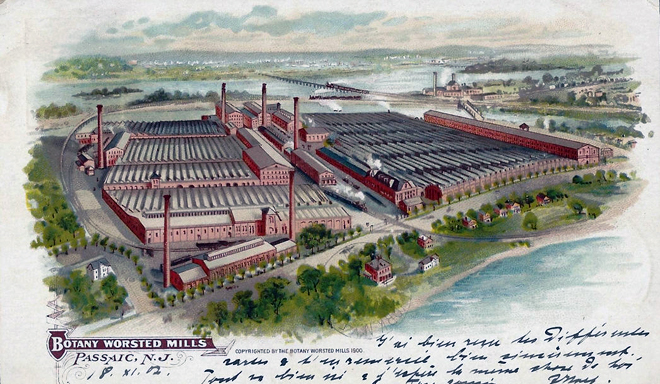
Postcard Image from the American Textile History Museum Collection
Many immigrated to the City of Passaic and the first task was to find employment. Textile production was a major business in this area and numerous people have ancestors who found employment in Worsted mills. A large number of immigrants came from the former Austro-Hungarian Empire and found work at these various textile mills. For those who had come from farming backgrounds and were unskilled, these mills offered a fast way to secure necessary employment. To understand what these mills were like for many heritages, a look at reference materials is necessary. During the year 1889 the Congress of the United States imposed many duty fees on Worsted products. These fees cut the profits of foreign companies and many decided to begin operations in America. The timing of these events was perfect. Companies in Europe began to build mills and thousands of hands were necessary to operate them. It was at this time that the great migration of various Slavic immigrants began in earnest. With thousands of individuals coming to American shores, these mills were assured that they would be fully staffed. The Botany Company which was located in Leipzig, Germany was one of the first to build a massive complex in the City of Passaic. The mill location was excellent as it ran along the Passaic River which, was a necessary component for the production of Worsted materials. In 1890 the mill began full operation and expanded instantly. In time, Botany was well over sixty acres of land and would encompass two cities, Passaic and Clifton. This Worsted mill and others to come would be dominated by those of Germanic heritage. Most positions of authority including supervisory positions were offered to those of German heritage first. It is also noted that in the early years of these mills, even unskilled labor positions were first offered to those of German descent. Many of the Worsted mills had an unspoken rule to hire from their own countries and heritage first. Worsted Mills brought their own managers and supervisors with them from Germany to staff their new companies. During the early years, it was very rare to see anyone of Slavic heritage holding a position of authority.
In 1903 Julius Forstmann began the Forstmann & Huffmann Worsted Mill in Passaic. Eventually, his operations would expand to the point where he would open another larger mill in Garfield. A review of documentation offers that Julius Forstman was personally responsible for every aspect of his mill. Unfortunately, the relationship with his workers was not pleasant. He tended to look upon the many workers of his mills as his own property. His views became more harsh especially with the advent of the union movement in Passaic during the early part of the last century. By the year 1918 Botany Mills employed well over 6,000 individuals with Forstmann & Huffman numbers being approximately 5,000. These companies were the owners of two major Worsted Mills in Passaic and Garfield. Other worsted mills were Gera mills of Passaic which employed 1,500 workers, New Jersey Worsted Spinning Mill of Garfield, 1,500 employees, and Passaic Worsted, 450 employees. All three of these mills had began between the years of 1900 though 1911. In 1902 the Garfield Worsted Company was started and at its peak, employed over 1,200 individuals. There were also many smaller factories and mills that operated to compliment the larger mills. Many were basic mills existed by filling overflow orders that the major Worsted mills could not handle. These smaller based mills and shops had one foundation which was to make a swift profit. Wages in these mills were low and many utilized female labor to keep costs at a minimum. Due to their low wages and substandard conditions, they earned the nickname of "Cockroach Shops" by immigrant employees.
The production of Worsted was a massive undertaking. The larger mills needed thousands of hands to fully staff and handle production. Worsted products became very popular with the general public beginning in the 1890's. The product was not as heavy as wool and was soft. These benefits made Worsted products extremely popular and demand grew. The manufacturing of Worsted utilized manual labor and machinery. This made these mills more efficient production wise than woolen mills of the period. A review of documents from 1918 shows over 9,000 residents of the City of Passaic out of a total count of 21,396 were employed in Worsted Mills. In the City of Garfield, there were approximately 4,000 employed at the Garfield Worsted Mills. The laborers who came to these mills were of various heritages. In 1890, a review of the Federal Census for the City of Passaic offers the population somewhat over 13,000 people. By the 1920 Federal Census, it was counted that over 17,000 alone stated their heritage was Polish. A review of statistics for various heritages can become clouded at this date. For the 1920 census, it is mentioned that Passaic was home to 2,600 Ruthenians, 5,857 Slovaks and 2,958 Russians. Breaking this census down via place of origins, it is noted that many who stated they originated in Eastern Galicia (Western Ukraine today) makes the term Russian (and sometimes Polish) incorrect. Many within this title were Ruthenians and Ukrainians. This is evidenced with the towns of birth that were offered. Most Ruthenians came to Passaic from the former Austro-Hungarian Empire districts of Saris, Spis and Zemplin. What becomes difficult to determine is that by the 1920 Federal Census, a change had occurred in identity titles. The Slovak identity combines here with the Ruthenians as many who identified as being Slovak also came from these same regions. If no town of origins was mentioned, it is difficult to gauge heritage as only country of origins is listed. Some of the 1920 Census records for Passaic do offer Ukrainian as a specific nationality. This term tended to be confused many times with Russian. Not only were those of Ukrainian heritage classified as Russian, but, Ruthenians and those who were Polish had this title attached to their record depending upon area of origins.
Taking into account houses of worship built by various heritages, it is interesting the extent some clergy became involved with their members employers. There were numerous strikes and labor movements in Passaic just as there were many church related upheavals. Catholic/Orthodox priests and ministers of the Hungarian Reformed Churches voiced their disapproval of the Worsted mills. It was felt these mills were in excellent financial condition and yet, continued to pay their employees rates which were too low. In 1918 a major strike was begun which demanded compensation to those who had suffered serious physical harm. A number of clergy from Passaic were on hand to discuss this issue with the owners of the Worsted mills. It was also common for many clergy to inform their members of better paying jobs at mills outside of the area. This became an issue of contention with the mill owners, especially those who were German Catholic. The Hungarian community in Passaic numbered approximately 6,000 and many came from the regions of Szabolcs, Borsod and Abauj-Torna. Hungarians sponsored many work-related benefits societies in Passaic such as the Hungarian Workingmen’s Club, the Hungarian Sick and Death Benefit Society and other groups to aide Passaic’s Hungarian community. At the governmental level, Slavic immigrants had very little representation but, in 1909, the cities first councilman of Slavic decent, Edward Levendusky was elected. Many immigrants who found work in the Forstmann & Huffmann mill in Garfield were able to purchase housing which had been originally built by the mill. The 1920 Federal Census offers a population in Garfield of 19,371 and out of this figure, approximately 9,000 were foreign born.
Working in the various Worsted mills could be tolerable or, very negative. Producing Worsted products was a very demanding process. For a basic Worsted Mill, there were a number of categories that needed to be filled. The highest categories were filled by unskilled labor and this included the various Slavic immigrants. The weave rooms employed the largest amount of laborers and this job required little skill but, constant attention. A weaver could never leave their looms as during this process the product could break and the loom would require immediate attention. Those who operated machines generally worked in a very long hall-like building and many tended to have hearing problems or, went deaf due to the noise of the machines. Many of these machines also had no forms of safety devices or emergency shut off switches during this period. Many laborers lost fingers, hands and entire arms due to the machine manufacturers neglect of safety measures. Mending and Burling were functions performed at the end of Worsted processing and most times, these positions were held by women. Those who were employed as menders were more skilled as they had to repair and replace broken threads. Burlers were not a skilled position and they would obtain the product to remove various lumps and knots. The pay rates for positions varied and could be from twenty to thirty dollars per week. Many women worked in Worsted mills to compliment their husbands salaries. It is well noted that approximately one half of the entire number of Worsted workers in the City of Passaic were women. Other women who were single also worked in Worsted mills to assist family finances. Other job positions in various Worsted mills were Sorting, Carding, Combing, Cap Spinning, Reeling, Winding, Spooling and Dressing.
One interesting fact of the Worsted mill was an odd hour night shift especially for women. This shift ran from approximately 8:00 p.m. until 6:00 a.m. Many women found this shift serviceable as, they could leave children with a husband, work their shift and then, return before the children woke up. While this was a ten hour shift, it afforded many women the opportunity to work and earn extra income. A very large incentive to this shift was a special ten percent addition to the salary. Many women found this shift difficult to accomplish, but, tried as best they could due to the various financial incentives. Numerous problems were encountered by women who worked in Worsted Mills. Due to a large labor force, replacement of a worker could be accomplished with ease by management. Many women who were pregnant worked until they were ready to give birth and then, rushed back quickly to keep their positions. The years 1916 through 1919 offer a high infant mortality rate for the City of Passaic and this along with other factors could be one explanation for these events. Prior to the Union Movement and the establishment of firm agreements, a Worsted Mill environment all depended upon its owners. Some Worsted mills never extended any financial compensation to injured workers or tired to improve conditions. Other Worsted mills, pressured by local clergy and government did bend to various requests. In 1918 the National Consumers League stated that the Botany Mill in Passaic was "notoriously lacking in provision for the welfare of its workers." After this critical investigation and along with support from the Union Movement, conditions were improved for Botany employees.
The Forstmann & Huffmann mills were not much better before outrage would break in the form of various strikes and walkouts. During the period of 1910 though 1920, all the Worsted mills would see numerous labor protests which helped to strengthen the Union movement in the City of Passaic. Walkouts and Labor Strikes tended to become a chain reaction. Workers at the Manhattan Rubber Company would support a strike at the Botany Mill and vice versa. Taking this to a higher level, it was common to find in various ethnic periodicals and newspapers the names of those who had "refused to strike" mentioned outright. Not only the employees but, the employers also had their own "black lists." These lists contained the names of those a mill would refuse to hire due to strike or union activities. During December, 1916, management of the various Worsted Mills gathered to form the "Industrial Council of Passaic Wool Manufactures." This council was little more than an attempt by the manufactures to set standard rules to hinder a worker going from one mill to another. Out of this council was formed an employment bureau which was no better than a spy operation. Began on March 1, 1917, this council utilized various methods to check backgrounds on each and every individual who applied for employment. If it was found a person had participated in a strike, was a member of a union or any other form of labor organization, that person would not be hired. The secretary to this council cheerfully told his employers that this has "resulted in the mills obtaining a desirable class of labor." It is to the credit of those who were employed within the various Worsted mills that once these deceitful and cowardly practices on behalf of management were discovered, the strikes and various walk outs increased in earnest. It was from these strikes which included numerous Slavic immigrants that union movement changes were implemented and helped to benefit immigrant laborers.
Passaic, New Jersey - Circa 1910 to 1930
by, Joy E. Kovalycsik
Wedding Photo of Joseph and Maria (Sadloch) Sokol
Married in 1892 at St. Michael's Greek Catholic Church, Passaic, New Jersey
(Great-Grandparents of TCC Co-Founder, Steven M. Osifchin)
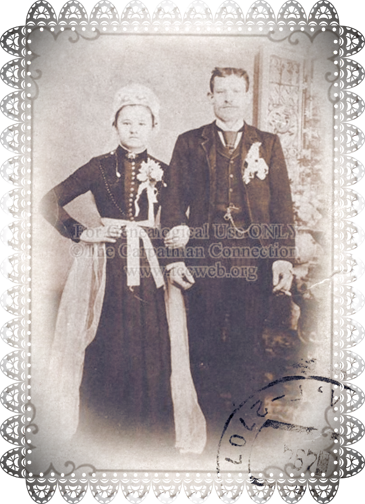
The City of Passaic was a major area of immigration between the years of 1882 to 1920 and the immigrants who came to this city brought with them not only their language and religion, but also cherished traditions which included marriage customs. Most Ruthenians who came to this city mostly originated from Eastern Slovakia, former Saros county and therefore, customs tended to be somewhat identical. Many immigrants to Passaic were from Ujak/Udol and the surrounding village areas of Circ, Maly, Matysova, Maly Lipnik and Starina. Many immigrants lived within a 6 block radius (the lower East Side) of each other and it was common to see the traditions performed in this city. Customs found among Greek Catholics were very unique and it was not until much later they would be seen in Orthodox churches who left the Greek Catholic Church to join another that religion and due to a high rate of marriage between Greek Catholics and Orthodox church members.
In the early days it was not common for Ruthenians to wait for a long engagement period. As found in the microfilmed copy of the "Passaic Daily Herald" dated February 2, 1904 an entire article was published giving insight into these customs. Excerpts from this article are:
"Epidemic of Weddings in Foreign Quarter Thirty Odd Couples Made Happy within Twenty-Four Hours Priests were Kept Busy Saturday and Yesterday."
"More weddings took place in Dundee (Lower East Side) in the twenty four hours beginning last Sunday morning that ever before in the history of this City. The large number of weddings are credited to the fact that Lent begins two weeks from tomorrow and during that time the rules of the church forbid the solemnization of marriages."
'You will find' said the rector of one of the churches yesterday, "that the foreigners are not advocates of long engagements. You Americans can be engaged for two or three years but the young Slavish couples think that they are being punished if they have to be engaged more than two or three months."
The following are customs told to me by my deceased grand aunt, Mrs. Edna Warchol, who told of her own wedding and other friends she had knew during her years living in the City of Passaic. A custom generally followed was prior to the wedding the couple were "blessed" by both sets of parents. the fathers of both the couple would draw a cross on their foreheads blessing them, the mothers would so likewise and there was always an abundance of crying by everyone. While the bride was dressing (which, many times here did not include the traditional "white wedding gown", they wore whatever they could afford) the bride’s mother would tuck under her skirt a small piece of cloth sewed together, inside was a piece of bread, that they may never go hungry, and a coin, that they may never be poor. Once at the church (where the entire party would walk from the tenement building) the bride and groom would enter the back of the church and the betrothal service would begin, when this was finished both would follow the priest to the altar and the service would begin. The Greek Catholic church always used a lovely crown of flowers and green leaves, there was never any “crowns” as are seen in the Orthodox churches. A kneeler would be placed near the front of the church for the couple to kneel during certain parts of the ceremony. They would receive Holy Communion and then, go before a statue or picture of the Virgin Mary for the bride to present any flowers she was holding, no Greek Catholic wedding in Passaic was complete without doing this and it still continues in the Greek (Byzantine) Catholic religion in Passaic to this day.
Custom dictated that friends of the family were witnesses, not family members as is common now. It was also a custom for neither the bride or groom to look at the other during the service, it was said whoever looked at the other would be the first to die in the marriage. There were no classes for preparation for marriage, only a meeting with the priest to pick the date and make sure that date would be acceptable according to the church calendar. After the ceremony, the wedding party would walk back to wherever the "reception" was held. Most times this was a privately owned home which had a small back yard that a family member or friend offered to the couple. “Renting” a hall was non-existent and having the party in the tenement building was cramped, but, it was done if there was no other place to celebrate. This party would go on for 3 days, sometimes more, all the guests bringing food and drink. Some who had to work (most factories in Passaic worked 3 shifts, 6 days a week) would leave, go to work, and then come back again. It was not uncommon for the groom himself to do this. The party would continue until all the food and drink were exhausted and the guests were tired. Music was provided by anyone who knew how to play a violin, or some other musical instrument, I was told whoever did provide the music was not expected to give a gift to the couple as they already gave a gift, which was, the entertainment. If the bride was lucky she may get a total of $20.00 in gifts from her family and friends, my grand-aunt said she felt especially lucky as one well off relative gave her a hand pushed carpet sweeper. All in all, marriage was a "casual" affair. There were no big floral arrangements, photographers, rented cars to take them to the church, gowns and other expensive trappings considered vitally necessary for today’s wedding services. It was very popular in the Passaic area to have your marriage over the long labor day weekend. This way, you could have Monday off and the guests could enjoy themselves without having to worry about work. If people look back at their relatives weddings in the Passaic area, they find many who followed this new local “custom” in America to enjoy a wedding celebration.



